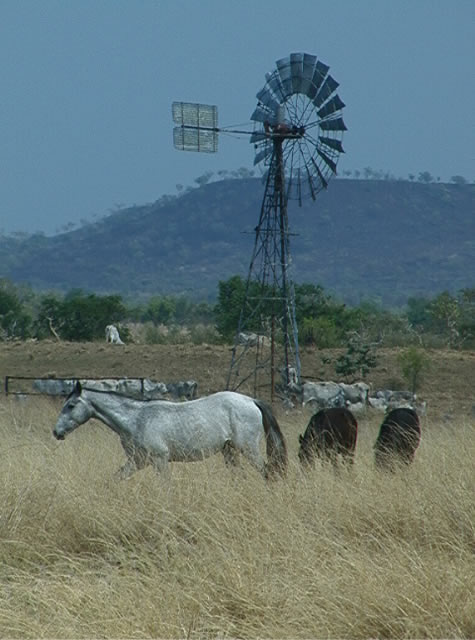2001 October 4, Thursday. Gunbunbu Waterhole, Humbert Track, Gregory National Park.
THEME: Gregory National Park
SUBJECT AREA: History
TOPIC: Augustus Charles Gregory - explorer
The first European to discover the magnificent country we are now experiencing was Augustus Charles Gregory. Setting off on foot (without a Mitsubishi waiting twenty clicks up) he completed the first trip across northern Australia from west to east, in the mid 1850s. The British government financed his expedition – the biggest inland journey attempted at that time - in the hope of finding productive farming land.
The expedition began at sea, for in 1854 journeys were long and difficult even through country which had been previously traversed. The barque Monarch shipped the party to the Northern Territory’s Joseph Bonaparte Gulf, where they entered the Victoria River in a schooner, Tom Tough. The initials Augustus Gregory carved into a Boab tree at what is now the town of Timber Creek can still be seen there today.

Augustus and his party spent months in each area they came to, methodically examining the land, and finding much potential for grazing land. They were not as foolhardy as other desert explorers, skirting the deserts in favour of useful land. While this opened up a vast amount of reasonably lush landscape, it left the true interior of the country still to be discovered.
History remembers Augustus Gregory as “The Cautious Explorer”. His expedition well organised, and his very name, Gregory, means ‘careful’. Yet, like almost all the early explorers, his party suffered difficulties and privations they could scarcely have imagined. As they came ashore at the mouth of the Victoria, three horses were drowned and one lost in the mangrove swamps. Crocodiles took other horses. Their sheep died in the intense heat and their inflatable boat melted. Their rations were destroyed by the heat, white ants and rats. Soon they were eating bats and slaughtering and jerking the meat from their pack animals.
Despite these adversities, however, and the grim prospect of pioneering such untamed virgin territory, Gregory led a successful six-person expedition across the north of the country via Mataranka and Cape York, then south along the east coast, without loss of life of a single crew member.
Augustus Charles Gregory had covered three thousand kilometres by sea and eight thousand kilometres overland, by the time he reached Moreton Bay, on the Pacific Coast. Both the Boab tree (Adansonia gregorii), and the National Park here, are named in his honour.
Suggested learning activities:
Study an intriguing explorer either from your home country or around the world, and design a poster to honour his memory, and to teach others about his party’s achievements. Find out what lies along the route which he pioneered today. Did he establish cities, or find farmland or minerals? Perhaps a new pass was found through previously impenetrable mountains or across an ocean? Did he map any uncharted areas, or find unique natural landforms? Include any fascinating information you can discover, perhaps including some of the following:
When and where the explorer was born
What special skills he had to help him survive
What account of his travels was made (journals, ship logs, letters)
Who he took with him on the journey, and why (scientists, native guides)
Where the expedition travelled (incorporate a map?)
What they went in search of
How they travelled (by foot, horse, ship)
What natural hazards they had to overcome along the way
The hardships endured and the triumphs achieved
bel